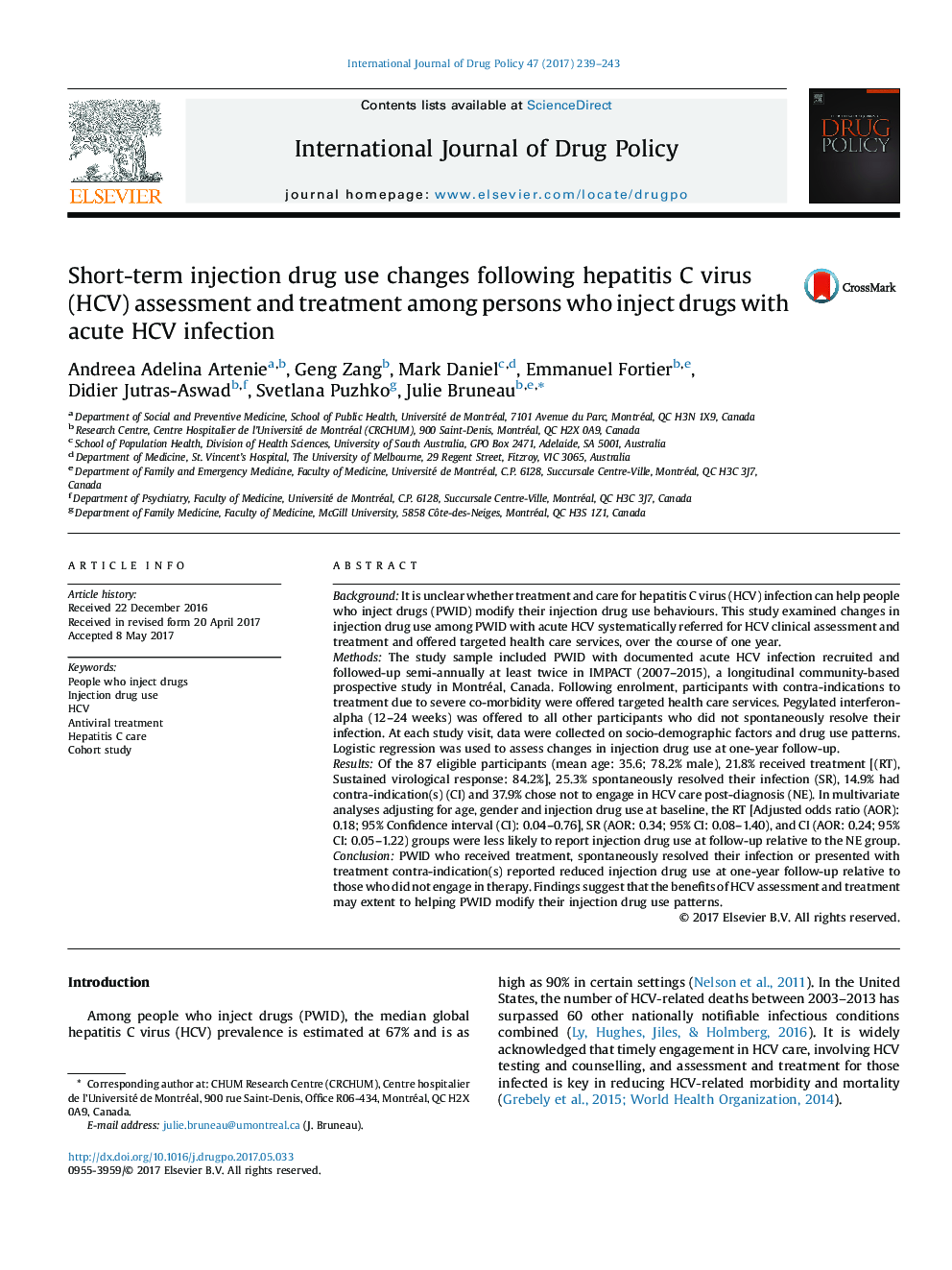| کد مقاله | کد نشریه | سال انتشار | مقاله انگلیسی | نسخه تمام متن |
|---|---|---|---|---|
| 5120822 | 1486258 | 2017 | 5 صفحه PDF | دانلود رایگان |

BackgroundIt is unclear whether treatment and care for hepatitis C virus (HCV) infection can help people who inject drugs (PWID) modify their injection drug use behaviours. This study examined changes in injection drug use among PWID with acute HCV systematically referred for HCV clinical assessment and treatment and offered targeted health care services, over the course of one year.MethodsThe study sample included PWID with documented acute HCV infection recruited and followed-up semi-annually at least twice in IMPACT (2007-2015), a longitudinal community-based prospective study in Montréal, Canada. Following enrolment, participants with contra-indications to treatment due to severe co-morbidity were offered targeted health care services. Pegylated interferon-alpha (12-24 weeks) was offered to all other participants who did not spontaneously resolve their infection. At each study visit, data were collected on socio-demographic factors and drug use patterns. Logistic regression was used to assess changes in injection drug use at one-year follow-up.ResultsOf the 87 eligible participants (mean age: 35.6; 78.2% male), 21.8% received treatment [(RT), Sustained virological response: 84.2%], 25.3% spontaneously resolved their infection (SR), 14.9% had contra-indication(s) (CI) and 37.9% chose not to engage in HCV care post-diagnosis (NE). In multivariate analyses adjusting for age, gender and injection drug use at baseline, the RT [Adjusted odds ratio (AOR): 0.18; 95% Confidence interval (CI): 0.04-0.76], SR (AOR: 0.34; 95% CI: 0.08-1.40), and CI (AOR: 0.24; 95% CI: 0.05-1.22) groups were less likely to report injection drug use at follow-up relative to the NE group.ConclusionPWID who received treatment, spontaneously resolved their infection or presented with treatment contra-indication(s) reported reduced injection drug use at one-year follow-up relative to those who did not engage in therapy. Findings suggest that the benefits of HCV assessment and treatment may extent to helping PWID modify their injection drug use patterns.
Journal: International Journal of Drug Policy - Volume 47, September 2017, Pages 239-243